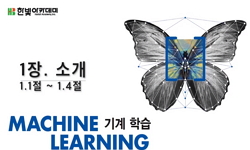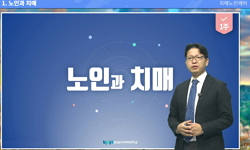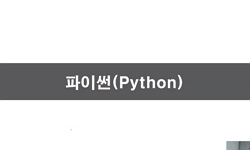치매 증상의 진행 지연 및 관리비용의 절감을 위해서는 치매를 조기에 발견하여 관리하는 것이 중요하다. 이에 본 연구에서는 치매와 관련된 인지신경학적 손상을 측정할 수 있는 간단한 그...
http://chineseinput.net/에서 pinyin(병음)방식으로 중국어를 변환할 수 있습니다.
변환된 중국어를 복사하여 사용하시면 됩니다.
- 中文 을 입력하시려면 zhongwen을 입력하시고 space를누르시면됩니다.
- 北京 을 입력하시려면 beijing을 입력하시고 space를 누르시면 됩니다.

치매 선별을 위한 도형모사검사 개발 및 타당화 = Development and Validation of Figure-Copy Test for Dementia Screening
한글로보기https://www.riss.kr/link?id=A106625295
- 저자
- 발행기관
- 학술지명
- 권호사항
-
발행연도
2020
-
작성언어
-
-
주제어
치매 ; 치매 선별 ; 도형모사검사 ; 그림검사 ; 기계학습 ; 시계그리기 검사 ; Dementia ; Dementia Screening ; Figure-Copy Test ; Drawing Test ; Machine Learning ; MMSE-DS ; Clock Drawing Test
-
KDC
338
-
등재정보
KCI등재
-
자료형태
학술저널
- 발행기관 URL
-
수록면
325-340(16쪽)
-
KCI 피인용횟수
0
- DOI식별코드
- 제공처
- 소장기관
-
0
상세조회 -
0
다운로드
부가정보
국문 초록 (Abstract)
치매 증상의 진행 지연 및 관리비용의 절감을 위해서는 치매를 조기에 발견하여 관리하는 것이 중요하다. 이에 본 연구에서는 치매와 관련된 인지신경학적 손상을 측정할 수 있는 간단한 그림검사인 도형모사검사를 개발하여, 치매 선별 가능성을 확인하고자 하였다. 또한, 도형모사검사의 이미지 데이터에 대한 기계학습을 통해 검사 채점의 자동화 가능성을 확인하고자 하였다. 이를 위해 270명의 일반 및 손상집단 참가자들에 대하여 도형모사검사, MMSE-DS, 그리고 시계그리기 검사를 수행하였다. 분석 결과, 도형모사검사의 점수는 높은 내적 일치도를 보였을 뿐만 아니라, 다른 두 검사 점수와 유의한 상관을 보여 검사의 타당성을 확인하였다. 세 검사의 치매 선별 정확도를 비교하기 위해 판별분석을 시행한 결과, 다른 두 검사와 비교했을 때 도형모사검사가 일반 및 손상 집단을 각각 90.8% 및 77.1%의 정확도로 예측하여, 집단에 대한 예측 수준이 상대적으로 더 높은 것으로 나타났다. 또한, 신경과 진단을 통한 임상결과를 통해, MMSE-DS를 통해 선별하지 못했던 치매 사례들을 도형모사검사를 이용하여 선별할 수 있음을 확인하였다. 마지막으로, 도형모사검사의 이미지 데이터를 이용한 기계학습을 수행한 결과, 73.70%의 정확률로 집단을 예측하는 것을 확인하였다. 본 연구는 기존에 사용되어 온 치매 선별 검사의 한계를 보완하여, 시행과 채점이 간편한 새로운 그림검사를 개발하였다는 점에서 의의를 지닌다.
다국어 초록 (Multilingual Abstract)
Early diagnosis and intervention of dementia is critical to minimize future risk and cost for patients and their families. The purpose of this study was to develop and validate Figure-Copy Test(FCT), as a new dementia screening test, that can measure ...
Early diagnosis and intervention of dementia is critical to minimize future risk and cost for patients and their families. The purpose of this study was to develop and validate Figure-Copy Test(FCT), as a new dementia screening test, that can measure neurological damage and cognitive impairment, and then to examine whether the grading precesses for screening can be automated through machine learning procedure by u sing FCT imag es. For this e nd, FCT, Korean v ersion of MMSE for Dementia S creening (MMSE-DS) a nd C lock D rawing Test were administrated to a total of 270 participants from normal and damaged elderly groups. Results demonstrated that FCT scores showed high internal constancy and significant correlation coefficients with the other two test scores. Discriminant analyses showed that the accuracy of c lassification for the normal and damag ed g roups using FCT were 90.8% and 77.1%, respectively, and these were relatively higher than the other two tests. Importantly, we identified that the participants whose MMSE-DS scores were higher than the cutoff but showed lower scores in FCT were successfully screened out through clinical diagnosis. Finally, machine learning using the FCT image data showed an accuracy of 73.70%. In conclusion, our results suggest that FCT, a newly developed drawing test, can be easily implemented for efficient dementia screening.
참고문헌 (Reference)
1 한지원, "치매 선별용 간이정신상태검사(Mini-Mental State Examination for Dementia Screening;MMSE-DS)와 단축형 MMSE-DS(SMMSE-DS)의 한국 노인 정상규준 연구" 대한노인정신의학회 14 (14): 27-37, 2010
2 중앙치매센터, "대한민국 치매현황 2018" 중앙치매센터 2019
3 Prince, M., "World Alzheimer Report 2011: The benefits of early diagnosis and intervention" Alzheimer’s Disease International 2011
4 Cheryl L. Stopford, "Working memory, attention, and executive function in Alzheimer’s disease and frontotemporal dementia" Elsevier BV 48 (48): 429-446, 2012
5 Rhonda Q. Freeman, "Visuoconstructional problems in dementia: Contribution of executive systems functions." American Psychological Association (APA) 14 (14): 415-426, 2000
6 Giuliano Binetti, "Visual and spatial perception in the early phase of Alzheimer's disease." American Psychological Association (APA) 12 (12): 29-33, 1998
7 Nishiwaki, Y., "Validity of the Clock-Drawing Test as a Screening Tool for Cognitive Impairment in the Elderly" 160 (160): 797-807, 2004
8 Heidi Lee, "Use of the Clock Drawing Task in the Diagnosis of Mild and Very Mild Alzheimer's Disease" Cambridge University Press (CUP) 8 (8): 469-476, 1996
9 Edith Kaplan, "The process approach to neuropsychological assessment" Informa UK Limited 2 (2): 309-311, 1988
10 K. K. Powlishta, "The clock drawing test is a poor screen for very mild dementia" Ovid Technologies (Wolters Kluwer Health) 59 (59): 898-903, 2002
1 한지원, "치매 선별용 간이정신상태검사(Mini-Mental State Examination for Dementia Screening;MMSE-DS)와 단축형 MMSE-DS(SMMSE-DS)의 한국 노인 정상규준 연구" 대한노인정신의학회 14 (14): 27-37, 2010
2 중앙치매센터, "대한민국 치매현황 2018" 중앙치매센터 2019
3 Prince, M., "World Alzheimer Report 2011: The benefits of early diagnosis and intervention" Alzheimer’s Disease International 2011
4 Cheryl L. Stopford, "Working memory, attention, and executive function in Alzheimer’s disease and frontotemporal dementia" Elsevier BV 48 (48): 429-446, 2012
5 Rhonda Q. Freeman, "Visuoconstructional problems in dementia: Contribution of executive systems functions." American Psychological Association (APA) 14 (14): 415-426, 2000
6 Giuliano Binetti, "Visual and spatial perception in the early phase of Alzheimer's disease." American Psychological Association (APA) 12 (12): 29-33, 1998
7 Nishiwaki, Y., "Validity of the Clock-Drawing Test as a Screening Tool for Cognitive Impairment in the Elderly" 160 (160): 797-807, 2004
8 Heidi Lee, "Use of the Clock Drawing Task in the Diagnosis of Mild and Very Mild Alzheimer's Disease" Cambridge University Press (CUP) 8 (8): 469-476, 1996
9 Edith Kaplan, "The process approach to neuropsychological assessment" Informa UK Limited 2 (2): 309-311, 1988
10 K. K. Powlishta, "The clock drawing test is a poor screen for very mild dementia" Ovid Technologies (Wolters Kluwer Health) 59 (59): 898-903, 2002
11 Valeria Isella, "The applause sign in cortical and cortical-subcortical dementia" Springer Science and Business Media LLC 260 (260): 1099-1103, 2013
12 Belinda A Dridan, "The Simple Copy Task: Detecting Higher Order Visual Processing Deficits in Schizophrenia, Dementia, and Movement Disorder Groups" Wiley 48 (48): 98-109, 2013
13 Magdalena Chechlacz, "The Neural Substrates of Drawing: A Voxel-based Morphometry Analysis of Constructional, Hierarchical, and Spatial Representation Deficits" MIT Press - Journals 26 (26): 2701-2715, 2014
14 Borson, S., "The Clock Drawing Test : Utility for Dementia Detection in Multiethnic elders" 54 (54): 534-540, 1999
15 Rahman, S., "Specific cognitive deficits in mild frontal variant frontotemporal dementia" 122 (122): 1469-1493, 1999
16 Marilyn Hartman, "Sources of Age Differences on the Rey-Osterrieth Complex Figure Test" Informa UK Limited 12 (12): 513-524, 2010
17 D Cahn, "Screening for dementia of the alzheimer type in the community: The utility of the clock drawing test" Oxford University Press (OUP) 11 (11): 529-539, 1996
18 MERVIN BLAIR, "Quantitative and qualitative analyses of clock drawing in frontotemporal dementia and Alzheimer's disease" Cambridge University Press (CUP) 12 (12): 159-165, 2006
19 Carolyn M. Parsey, "Quantitative and Qualitative Analyses of the Clock Drawing Test in Mild Cognitive Impairment and Alzheimer Disease: Evaluation of a Modified Scoring System" SAGE Publications 24 (24): 108-118, 2011
20 J C Thompson, "Qualitative neuropsychological performance characteristics in frontotemporal dementia and Alzheimer's disease" BMJ 76 (76): 920-927, 2005
21 R Brookmeyer, "Projections of Alzheimer's disease in the United States and the public health impact of delaying disease onset." American Public Health Association 88 (88): 1337-1342, 1998
22 Alfredo Ardila, "Neuropsychological assessment in illiterates: Visuospatial and memory abilities" Elsevier BV 11 (11): 147-166, 1989
23 S E Starkstein, "Neuropsychological and psychiatric differences between Alzheimer's disease and Parkinson's disease with dementia." BMJ 61 (61): 381-387, 1996
24 Gilberto Levy, "Memory and executive function impairment predict dementia in Parkinson's disease" Wiley 17 (17): 1221-1226, 2002
25 Tiffany W. Chow, "MMSE Scores Decline at a Greater Rate in Frontotemporal Degeneration than in AD" S. Karger AG 22 (22): 194-199, 2006
26 Isabelle Rouleau, "Longitudinal Analysis of Clock Drawing in Alzheimer's Disease Patients" Elsevier BV 31 (31): 17-34, 1996
27 D. Knopman, "Long-term tacrine (Cognex) treatment: Effects on nursing home placement and mortality" Ovid Technologies (Wolters Kluwer Health) 47 (47): 166-177, 1996
28 Elisabete Pinto, "Literature Review of the Clock Drawing Test as a Tool for Cognitive Screening" S. Karger AG 27 (27): 201-213, 2009
29 Marcia Scazufca, "Limitations of the Mini-Mental State Examination for screening dementia in a community with low socioeconomic status" Springer Science and Business Media LLC 259 (259): 8-15, 2009
30 Lena Ehreke, "Is the Clock Drawing Test a screening tool for the diagnosis of mild cognitive impairment? A systematic review" Cambridge University Press (CUP) 22 (22): 56-63, 2010
31 Trojano, L., "Handbook of Clinical Neurology, 88" Elsevier Science 373-391, 2008
32 Gainotti, G., "Handbook of Clinical Neurology, 151" Elsevier Science 331-348, 2018
33 Luigi Trojano, "Drawing Disorders in Alzheimer’s Disease and Other Forms of Dementia" IOS Press 53 (53): 31-52, 2016
34 Katherine L. Possin, "Distinct neuroanatomical substrates and cognitive mechanisms of figure copy performance in Alzheimer's disease and behavioral variant frontotemporal dementia" Elsevier BV 49 (49): 43-48, 2011
35 Deborah A. Cahn-Weiner, "Discrimination of Dementia With Lewy Bodies From Alzheimer Disease and Parkinson Disease Using the Clock Drawing Test" Ovid Technologies (Wolters Kluwer Health) 16 (16): 85-92, 2003
36 Spering, C. C., "Diagnostic accuracy of the MMSE in detecting probable and possible Alzheimer's disease in ethnically diverse highly educated individuals: an analysis of the NACC database" 67 (67): 890-896, 2012
37 Ronald C. Petersen, "Current Concepts in Mild Cognitive Impairment" American Medical Association (AMA) 58 (58): 1985-1992, 2001
38 Laura Serra, "Constructional Apraxia as a Distinctive Cognitive and Structural Brain Feature of Pre-Senile Alzheimer's Disease" IOS Press 38 (38): 391-402, 2013
39 Luigi Trojano, "Cognitive neuroscience of drawing: Contributions of neuropsychological, experimental and neurofunctional studies" Elsevier BV 45 (45): 269-277, 2009
40 Patricia A. Boyle, "Cognitive and motor impairments predict functional declines in patients with vascular dementia" Wiley 17 (17): 164-169, 2002
41 FREDERICK W. UNVERZAGT, "Clinical utility of CERAD neuropsychological battery in elderly Jamaicans" Cambridge University Press (CUP) 5 (5): 255-259, 1999
42 Min-Sup Shin, "Clinical and empirical applications of the Rey–Osterrieth Complex Figure Test" Springer Science and Business Media LLC 1 (1): 892-899, 2006
43 Guy M. McKhann, "Clinical and Pathological Diagnosis of Frontotemporal Dementia" American Medical Association (AMA) 58 (58): 1803-1809, 2001
44 Jeremia Heinik, "Can clock drawing test help to differentiate between dementia of the Alzheimer's type and vascular dementia? A preliminary study" Wiley 17 (17): 699-703, 2002
45 Wendy J Lorentz, "Brief Screening Tests for Dementia" SAGE Publications 47 (47): 723-733, 2002
동일학술지(권/호) 다른 논문
-
단독가구 노인의 가족관계가 지역사회참여에 미치는 영향 : 성별차이를 중심으로
- 한국노년학회
- 염지혜(Jihye Yeom)
- 2020
- KCI등재
-
치과에서 시행되고 있는 시술 전 항혈전제 관련 처치에 대한 실태 파악
- 한국노년학회
- 한아름(A Lum Han)
- 2020
- KCI등재
-
Andersen과 Newman의 행동모델을 적용한 경로당 이용 영향요인에 관한 연구 : 이용자 만족도 매개효과 분석
- 한국노년학회
- 김정근(Jeong Keun Kim)
- 2020
- KCI등재
-
요양병원 간호사 및 간호조무사의 낙상예방활동 실천의 방해요인
- 한국노년학회
- 박윤희(Yunhee Park)
- 2020
- KCI등재
분석정보
인용정보 인용지수 설명보기
학술지 이력
| 연월일 | 이력구분 | 이력상세 | 등재구분 |
|---|---|---|---|
| 2026 | 평가예정 | 재인증평가 신청대상 (재인증) | |
| 2020-01-01 | 평가 | 등재학술지 유지 (재인증) |  |
| 2017-01-01 | 평가 | 등재학술지 유지 (계속평가) |  |
| 2013-01-01 | 평가 | 등재학술지 유지 (등재유지) |  |
| 2010-01-01 | 평가 | 등재학술지 유지 (등재유지) |  |
| 2008-01-01 | 평가 | 등재학술지 유지 (등재유지) |  |
| 2006-01-01 | 평가 | 등재학술지 유지 (등재유지) |  |
| 2003-01-01 | 평가 | 등재학술지 선정 (등재후보2차) |  |
| 2002-01-01 | 평가 | 등재후보 1차 PASS (등재후보1차) |  |
| 2000-07-01 | 평가 | 등재후보학술지 선정 (신규평가) |  |
학술지 인용정보
| 기준연도 | WOS-KCI 통합IF(2년) | KCIF(2년) | KCIF(3년) |
|---|---|---|---|
| 2016 | 1.34 | 1.34 | 1.72 |
| KCIF(4년) | KCIF(5년) | 중심성지수(3년) | 즉시성지수 |
| 1.84 | 2.08 | 2.242 | 0.19 |





 스콜라
스콜라







